
The Salvation Army (TSA) is a Protestant Christian church and an international charitable organisation headquartered in London, England. It is aligned with the Wesleyan-Holiness movement. The organisation reports a worldwide membership of over 1.7 million, consisting of soldiers, officers, and adherents who are collectively known as salvationists. Its founders sought to bring salvation to the poor, destitute, and hungry by meeting both their "physical and spiritual needs". It is present in 133 countries, running charity shops, operating shelters for the homeless, and disaster relief and humanitarian aid to developing countries.

General Sir John Monash was an Australian civil engineer and military commander of the First World War. He commanded the 13th Infantry Brigade before the war and then, shortly after its outbreak, became commander of the 4th Brigade in Egypt, with which he took part in the Gallipoli campaign.
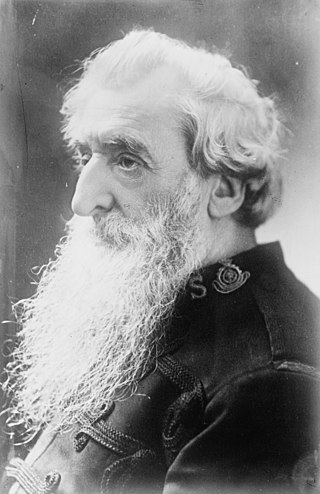
William Booth was an English Methodist preacher who, along with his wife, Catherine, founded the Salvation Army and became its first General (1878–1912). The Christian movement with a quasi-military structure and government founded in 1865 has spread from London to many parts of the world. It is known for being one of the largest distributors of humanitarian aid.
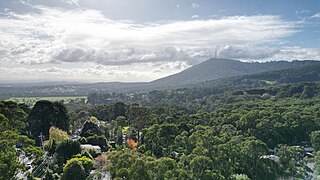
The Basin is a suburb in Melbourne, Victoria, Australia, 31 km east of Melbourne's Central Business District, located within the City of Knox local government area. The Basin recorded a population of 4,497 at the 2021 census.
The Limelight Department was one of the world's first film studios, beginning in 1898, operated by The Salvation Army in Melbourne, Australia. The Limelight Department produced evangelistic material for use by the Salvation Army, including lantern slides as early as 1891, as well as private and government contracts. In its 19 years of operation, the Limelight Department produced about 300 films of various lengths, making it one of largest film producers of its time.
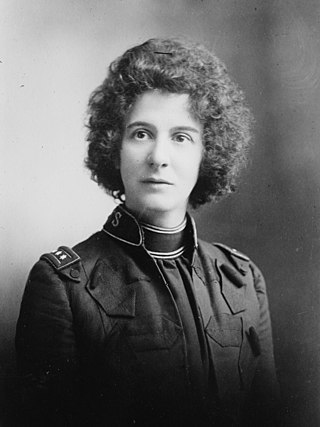
Evangeline Cory Booth, OF was a British evangelist and the fourth General of The Salvation Army from 1934 to 1939. She was the first woman to hold the post.
The Joystrings were a 1960s British Christian music group led by classically trained keyboard player and singer Joy Webb, who was an officer in the Salvation Army.
The Metropolitan Fire Brigade (MFB), also known as the Metropolitan Fire and Emergency Services Board, was a fire service in Victoria, Australia. The MFB provided firefighting, rescue, medical and hazardous material incident response services to the metropolitan area of Melbourne. The MFB's headquarters were located at the Eastern Hill Fire Station in East Melbourne.

Unit colour patches are a method of identification used by the Australian Army, used to indicate which unit a soldier belongs to.

Herbert Henry Howard Booth was a Salvation Army officer, the third son of five children to William and Catherine Booth (Mumford), who later went on to serve as an independent evangelist. He oversaw the Limelight Department's development and he was the writer and director for Soldiers of the Cross.
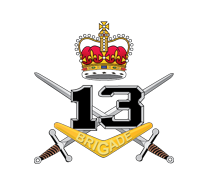
The 13th Brigade is an Army Reserve formation of the Australian Army. Originally formed in 1912 as a Militia formation in Victoria, the brigade was re-raised as a First Australian Imperial Force unit during World War I and fought on the Western Front. In the interwar years, the brigade was re-raised as a part-time formation based in Western Australia and later fought in the New Britain Campaign during World War II.
The Melbourne Staff Band (MSB) is the premier brass band of the Salvation Army in Australia.

The Battle of Kaiapit was an action fought in 1943 between Australian and Japanese forces in New Guinea during the Markham and Ramu Valley – Finisterre Range campaign of World War II. Following the landings at Nadzab and at Lae, the Allies attempted to exploit their success with an advance into the upper Markham Valley, starting with Kaiapit. The Japanese intended to use Kaiapit to threaten the Allied position at Nadzab, and to create a diversion to allow the Japanese garrison at Lae time to escape.
Booth University College, incorporated as the Salvation Army William and Catherine Booth University College, is a private, Christian liberal arts university college located in downtown Winnipeg, Manitoba, Canada. It is affiliated with the Salvation Army, a Christian organization presently operating in more than 130 countries.

The Salvation Army, Australia Eastern Territory or (AUE) was one of two administrative territories that The Salvation Army was divided into within Australia and covered 2 states and 1 Australian territory on the east coast of the country. The AUE was geographically sub-divided into 2 divisions, under different Divisional Commanders, each reporting directly to the Territorial Commander. Its headquarters was located at 261-265 Chalmers St, Redfern NSW 2016.

NewYork-Presbyterian Queens, stylized as NewYork-Presbyterian/Queens (NYP/Q or NYP/Queens), is a not-for-profit acute care and teaching hospital affiliated with Weill Cornell Medicine in the Flushing neighborhood of Queens in New York City. Formerly operating as Booth Memorial Hospital and New York Hospital Queens (NYHQ), it is located on the northeast corner of Main Street and Booth Memorial Avenue.

The Hamodava Coffee Company is a beverage manufacturer based in Auckland, New Zealand. Hamodava distributes exclusively Fair Trade and Organic certified products. Salvation Army officer Herbert Booth started the business in Melbourne, Australia in 1897 and ran it until its closure in 1929. Hamodava was relaunched by The Salvation Army in September 2016, with the company's operations being moved to Auckland.
Booth Memorial Hospital is the name of any of the hospitals affiliated with The Salvation Army (TSA); the latter was "founded by William Booth in 1878." The first of these "opened Booth Memorial in Manhattan in 1914 and its center in Flushing in 1957." Salvation Army Booth Memorial Hospital is a longer name used for some of them.
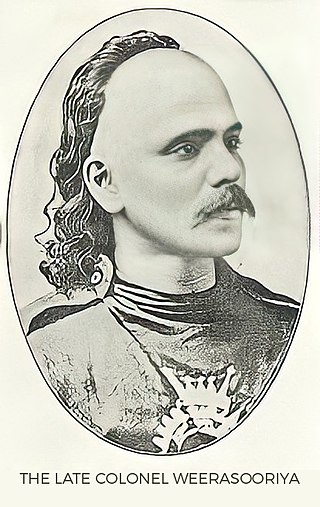
Arnolis (Arnold) Alexander Weerasooriya was the first Ceylonese Colonel of the Salvation Army, also serving as Second in Command of the Indian sub-continent 1887–1888. He was a member of the Weerasooriya family of Dodanduwa and Hikkaduwa, and he is understood to be the first Sinhalese member of the Salvation Army.
Minnie Lindsay Carpenter, née Rowell, was an Australian writer and an officer in The Salvation Army in Australia. She authored more than twelve books about Salvationist history. She also helped establish the Salvation Army International Nursing Fellowship and served as World President of the Home League. She married George Lyndon Carpenter, a Salvationist who was later elected as the fifth General of the Salvation Army in 1939.













